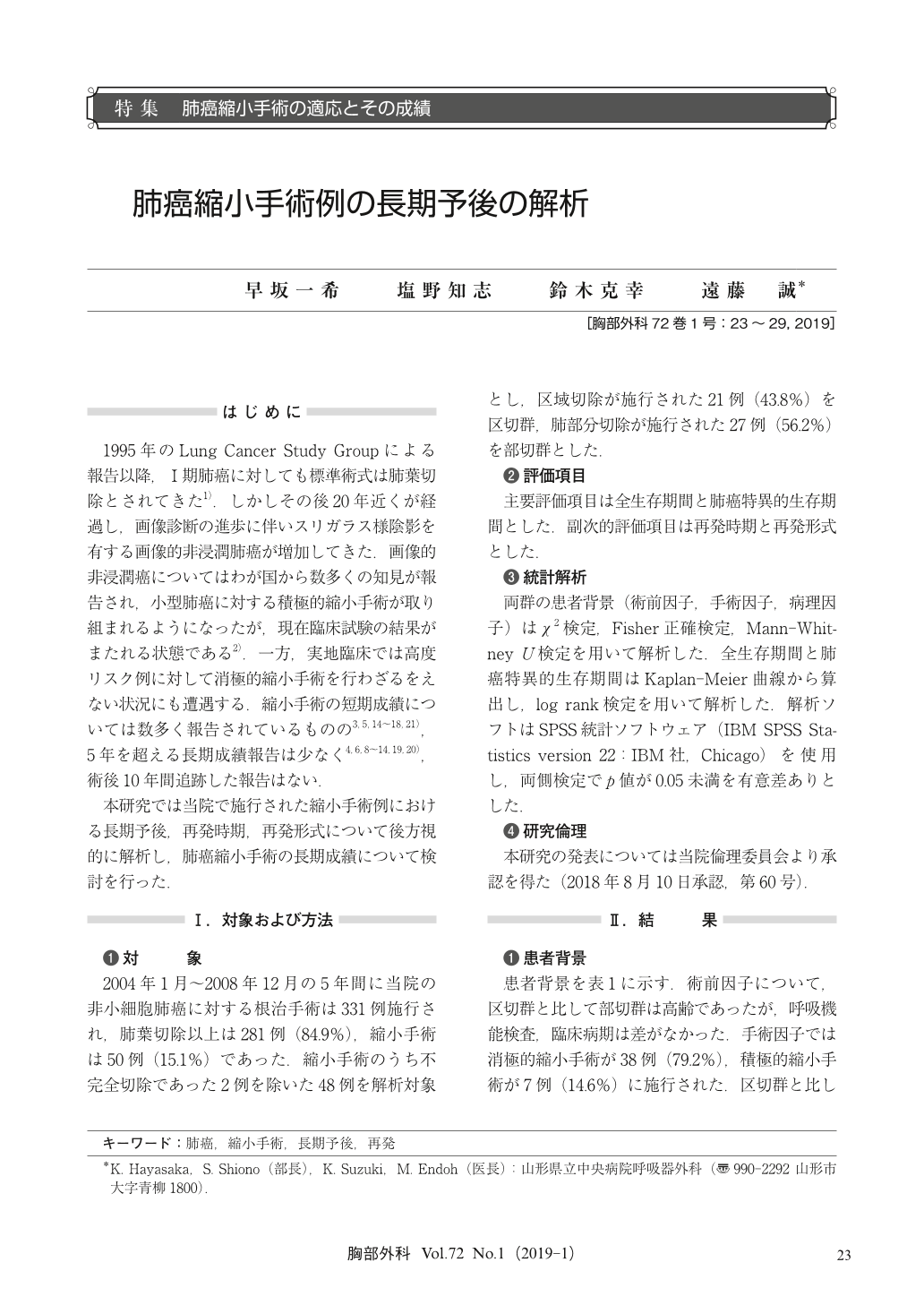Japanese
English
- 有料閲覧
- Abstract 文献概要
- 1ページ目 Look Inside
- 参考文献 Reference
1995年のLung Cancer Study Groupによる報告以降,Ⅰ期肺癌に対しても標準術式は肺葉切除とされてきた1).しかしその後20年近くが経過し,画像診断の進歩に伴いスリガラス様陰影を有する画像的非浸潤肺癌が増加してきた.画像的非浸潤癌についてはわが国から数多くの知見が報告され,小型肺癌に対する積極的縮小手術が取り組まれるようになったが,現在臨床試験の結果がまたれる状態である2).一方,実地臨床では高度リスク例に対して消極的縮小手術を行わざるをえない状況にも遭遇する.縮小手術の短期成績については数多く報告されているものの3,5,14~18,21),5年を超える長期成績報告は少なく4,6,8~14,19,20),術後10年間追跡した報告はない.
As a treatment for lung cancer, sublobar resection has been performed not only for high-risk patients but also for patients with radiographic early stage lung cancer. Although many studies revealed the short-term results of sublobar resection, long-term outcomes are still unclear. Here, we examined the 10-year follow-up results of sublobar resection for lung cancer, especially in overall survival(OS), cause-specific survival(CSS)and recurrence or death dynamics. Data from 48 consecutive patients who underwent sublobar resection for lung cancer between 2004 to 2008 were collected(21 patients:segmentectomy, 27:wedge resection). The median length of follow-up was 10 years. During follow-up, recurrences developed in 12 patients(25%)and 19 patients(40%)died, including 9(19%)patient deaths due to lung cancer. The 3-/5-/10-year OS and CSS rates for all patients were 81/77/61% and 87/85/80%, respectively. In terms of recurrence or death, 11 out of 12 patients with recurrences were diagnosed within the 3rd year. The peak of death due to lung cancer was shown to be years after surgery to which wedge resection contributed. On contrast, small peaks of non-cancer death were shown to be 8-10 years after surgery without relation to surgical procedure.

© Nankodo Co., Ltd., 2019


